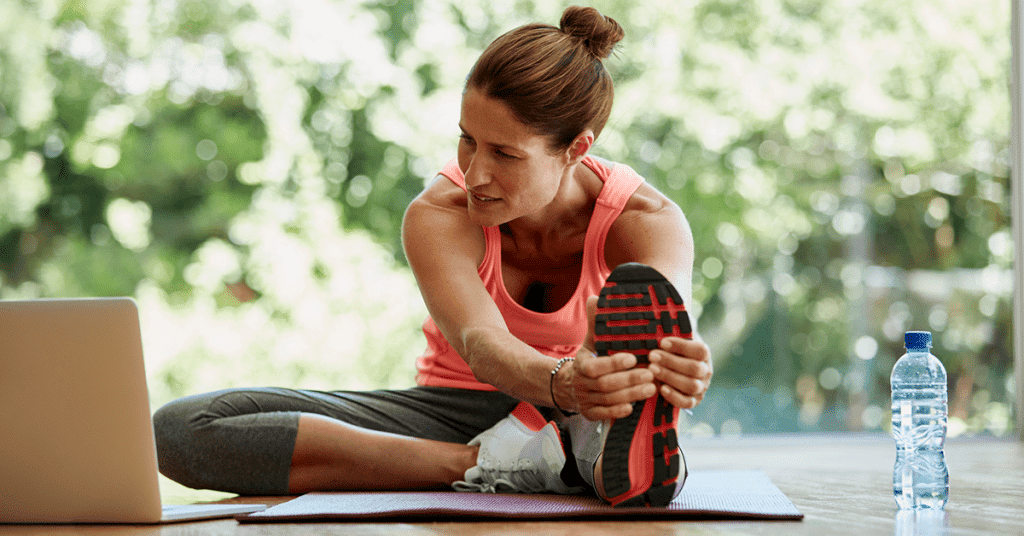Blog
The Role of Exercise in Managing Anxiety and Depression
It’s no secret that exercise is good for our physical health, but did you know that it’s also a powerful tool for managing anxiety and depression? As someone who has struggled with both conditions, I can attest to the positive impact that exercise has had on my mental health.
Anxiety and depression are among the most common mental health disorders, affecting millions of people worldwide. These conditions can be debilitating, causing symptoms such as persistent sadness or worry, lack of interest in activities once enjoyed, and difficulty sleeping. While medication and therapy can be effective treatments for these conditions, exercise is an often-overlooked tool that can be just as powerful.
The benefits of exercise for mental health are numerous. For one, exercise releases endorphins, the body’s natural “feel-good” chemicals. These chemicals can help to boost mood and reduce feelings of stress and anxiety. Additionally, exercise can help to reduce inflammation in the body, which has been linked to the development of depression.
But the benefits of exercise for mental health go beyond just the physical effects. Engaging in regular physical activity can also provide a sense of accomplishment and help to improve self-esteem. This can be especially important for individuals struggling with depression, who may feel a sense of hopelessness or helplessness.
So, what kind of exercise is best for managing anxiety and depression? The answer is simple: any kind of physical activity that you enjoy and can stick with. This could be anything from running or weightlifting to swimming or yoga. The important thing is to find something that you like and can do consistently.
One type of exercise that has received a lot of attention in recent years is high-intensity interval training or HIIT. This type of exercise involves short bursts of intense activity followed by periods of rest. HIIT has been shown to be particularly effective in reducing symptoms of depression and anxiety.
How you can start High-Intensity Interval Training
High-intensity interval training, or HIIT, is a form of exercise that involves short bursts of intense activity followed by periods of rest or lower intensity activity. HIIT has been shown to be an effective way to improve cardiovascular health, build muscle, and burn calories. It can also be a great way to manage anxiety and depression.
If you’re new to exercise or haven’t done high-intensity training before, it’s important to start slowly and gradually build up your intensity and duration over time. Begin with a warm-up that includes light cardio and stretching, and then start with short intervals of high-intensity activity, followed by longer periods of rest or lower intensity activity. For example, you might start with 20 seconds of high-intensity activity, followed by 40 seconds of rest, and repeat for a total of 10-15 minutes. As you become more comfortable, you can increase the duration and intensity of your intervals.
It’s important to remember that everyone’s fitness level is different, so it’s important to listen to your body and avoid pushing yourself too hard too fast. With consistent practice and gradual progression, you can become a pro at high-intensity interval training and reap the many physical and mental health benefits it offers.
Yoga is a great physical activity against anxiety and depression
Yoga has been shown to be an effective tool in managing symptoms of anxiety and depression. The practice of yoga combines physical postures, breath work, and meditation, creating a mind-body connection that can help alleviate stress and promote relaxation. The physical movements and deep breathing in yoga can help release tension and increase feelings of well-being, while meditation can help calm the mind and reduce negative thoughts. Additionally, the practice of yoga can increase mindfulness and improve self-awareness, allowing individuals to better recognize and manage their thoughts and emotions. Incorporating yoga into a daily routine can be a helpful way to manage symptoms of anxiety and depression.
Weightlifting releases endorphins
A weightlifting is a form of resistance training that involves lifting weights or using weight machines to build strength and endurance. In addition to physical benefits, weightlifting has been shown to have a positive impact on mental health, particularly in the treatment of depression. Weightlifting can increase the production of endorphins, the body’s natural mood boosters, which can help alleviate symptoms of depression. Additionally, weightlifting can provide a sense of accomplishment and help individuals feel more in control of their lives. Starting a weightlifting routine can be done slowly and gradually, starting with light weights and gradually increasing as strength and confidence improve. It is important to start with proper form and technique to prevent injury and to seek guidance from a qualified trainer if necessary.
Regular low-intensity exercise is also enough
The good news is that you don’t need to be a fitness enthusiast to reap the benefits of exercise for mental health. Even small amounts of physical activity can make a difference. Going for a short walk, doing a few yoga poses, or taking the stairs instead of the elevator can all contribute to improved mood and reduced symptoms of anxiety and depression.
Of course, it’s important to remember that exercise is not a substitute for medical treatment. If you are struggling with anxiety or depression, it’s important to talk to a healthcare professional about your treatment options. But for many individuals, exercise can be a powerful complement to other treatments, helping to reduce symptoms and improve overall well-being.
your mental health will thank you
exercise is a powerful tool for managing anxiety and depression. Whether you prefer high-intensity workouts or gentle yoga sessions, any form of physical activity can help to improve mood, reduce stress, and promote overall well-being. So, lace up your sneakers, roll out your yoga mat, or hit the weight room – your mental health will thank you


